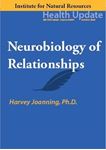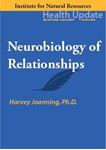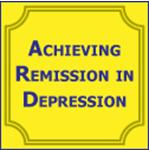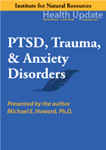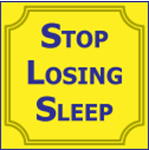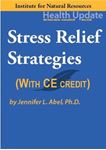You have no items in your shopping cart.
Recently viewed products
Psychology
Memory & Amnesia
Explains how memories are formed by identifying the four main processes of memory and the three stages of long-term memory. Describes the important differences between declarative/explicit memory and procedural/implicit memory. Lists the current concerns and controversies surrounding eyewitness testimony and repressed memories. Identifies the principal processes and causes of psychogenic and organic amnesias. Discusses the nature of “flashbulb” emotional memories. Identifies the difference among normal forgetting, age-associated memory impairment, and mild cognitive impairment. Lists the major memory disorders that can result in amnesia and dementia. Describes methods for improving memory.
$35.00
Memory Loss & Forgetfulness
Identifies the memory changes that take place in normal aging. Discusses how mild cognitive impairment (MCI) differs from memory loss in normal aging and from dementia. Describes the cognitive and personality changes that take place in Alzheimer’s disease. Identifies cognitive and personality changes that occur in a range of non-Alzheimer’s disease dementias.
$30.00
Memory Loss & Forgetfulness - Ebooklet
Identifies the memory changes that take place in normal aging. Discusses how mild cognitive impairment (MCI) differs from memory loss in normal aging and from dementia. Describes the cognitive and personality changes that take place in Alzheimer’s disease. Identifies cognitive and personality changes that occur in a range of non-Alzheimer’s disease dementias.
$25.00
Memory, Forgetfulness, & the Brain - Streaming Video - 6 Hours (w/Home-study exam)
Describes the essential components of forming, storing, and retrieving memories. Lists practical ways that perception, time, emotions, stress, and sleep affect memory. Discusses the differences between normal forgetting, age-related memory decline & amnesia syndromes. Lists the common lifestyle factors, medical conditions and medications that can compromise memory. Describes useful strategies to preserve memory & help patients and caregivers cope. Describes how information in this course can be utilized to improve patient care and patient outcomes. Describes, for this course, the implications for dentistry, mental health, and other health professions.
$83.00
Memory, Forgetfulness, & the Brain - Streaming Video only *NO CE - 6 hours
Describes the essential components of forming, storing, and retrieving memories. Lists practical ways that perception, time, emotions, stress, and sleep affect memory. Discusses the differences between normal forgetting, age-related memory decline & amnesia syndromes. Lists the common lifestyle factors, medical conditions and medications that can compromise memory. Describes useful strategies to preserve memory & help patients and caregivers cope. Describes how information in this course can be utilized to improve patient care and patient outcomes. Describes, for this course, the implications for dentistry, mental health, and other health professions.
$69.00
Mild Traumatic Brain Injury
Identifies the symptoms of and recovery pattern from a mild brain injury. Describes the difficulties in making the diagnosis of mild brain injury. Lists the steps in managing sports-related mild brain injuries. Describes treatment strategies for reducing the impact of mild brain injury on cognitive, emotional, behavioral, and vocational functioning. Identifies lifestyle changes that can prevent the onset of a mild brain injury.
$35.00
Mindfulness & Stress Reduction - DVD - 6 Hours (w/home-study exam)
Cites various effects of stress on the nervous system, including sympathetic arousal and the adrenal response. Describes the role of chronic stress in physical and psychological illnesses. Outlines mind-body therapies suitable for integrative health practices. Demonstrates the practical techniques related to mindful relaxation. Discusses the role of meditation and breathing techniques in stress reduction programs. Demonstrates simple exercises for use in alleviating stress symptoms. Describes how the Relaxation Response engages the parasympathetic nervous system. Describes strategies for integrating mindful stress-reduction methods into nursing, mental health, dentistry and other clinical practices.
$83.00
Mindfulness & Stress Reduction - DVD Only *NO CE - 6 hours
Cites various effects of stress on the nervous system, including sympathetic arousal and the adrenal response. Describes the role of chronic stress in physical and psychological illnesses. Outlines mind-body therapies suitable for integrative health practices. Demonstrates the practical techniques related to mindful relaxation. Discusses the role of meditation and breathing techniques in stress reduction programs. Demonstrates simple exercises for use in alleviating stress symptoms. Describes how the Relaxation Response engages the parasympathetic nervous system. Describes strategies for integrating mindful stress-reduction methods into nursing, mental health, dentistry and other clinical practices.
$69.00
Mindfulness & Stress Reduction - Streaming Video - 6 Hours (w/Home-study)
Cites various effects of stress on the nervous system, including sympathetic arousal and the adrenal response. Describes the role of chronic stress in physical and psychological illnesses. Outlines mind-body therapies suitable for integrative health practices. Demonstrates the practical techniques related to mindful relaxation. Discusses the role of meditation and breathing techniques in stress reduction programs. Demonstrates simple exercises for use in alleviating stress symptoms. Describes how the Relaxation Response engages the parasympathetic nervous system. Describes strategies for integrating mindful stress-reduction methods into nursing, mental health, dentistry and other clinical practices.
$83.00
Mindfulness & Stress Reduction - Streaming Video Only *NO CE - 6 hours
Cites various effects of stress on the nervous system, including sympathetic arousal and the adrenal response. Describes the role of chronic stress in physical and psychological illnesses. Outlines mind-body therapies suitable for integrative health practices. Demonstrates the practical techniques related to mindful relaxation. Discusses the role of meditation and breathing techniques in stress reduction programs. Demonstrates simple exercises for use in alleviating stress symptoms. Describes how the Relaxation Response engages the parasympathetic nervous system. Describes strategies for integrating mindful stress-reduction methods into nursing, mental health, dentistry and other clinical practices.
$69.00
Neurobiology of Relationships - DVD - 6 Hours (w/home-study)
Over the last 20 years, advances in neuroimaging have allowed scientists to directly observe brain functions while humans are engaging in behavior. This research has led to an improved understanding of how our brain functions when we are interacting with our mates and children. This workshop focuses on how to use this emerging knowledge of brain function to improve how we conduct therapy with individuals in intimate relationships.
$83.00
Neurobiology of Relationships - DVD only *NO CE - 6 hours
Over the last 20 years, advances in neuroimaging have allowed scientists to directly observe brain functions while humans are engaging in behavior. This research has led to an improved understanding of how our brain functions when we are interacting with our mates and children. This workshop focuses on how to use this emerging knowledge of brain function to improve how we conduct therapy with individuals in intimate relationships.
$69.00
Neurobiology of Relationships - Streaming Video - 6 Hours (w/home-study)
Over the last 20 years, advances in neuroimaging have allowed scientists to directly observe brain functions while humans are engaging in behavior. This research has led to an improved understanding of how our brain functions when we are interacting with our mates and children. This workshop focuses on how to use this emerging knowledge of brain function to improve how we conduct therapy with individuals in intimate relationships.
$83.00
Neurobiology of Relationships - Streaming Video only *NO CE - 6 hours
Over the last 20 years, advances in neuroimaging have allowed scientists to directly observe brain functions while humans are engaging in behavior. This research has led to an improved understanding of how our brain functions when we are interacting with our mates and children. This workshop focuses on how to use this emerging knowledge of brain function to improve how we conduct therapy with individuals in intimate relationships.
$69.00
Neurotransmitters: The Bridges of the Brain
Identifies the importance of neurotransmission for higher cognitive functions of the human brain. Outlines known neurotransmitters and their interplay in the brain as well as the influence of various neurotransmitters on thought, mood, and emotions. Identifies the various pharmaceutical and alternative remedies that influence the function of neurotransmitters. Discusses possible ways to optimize patient management and minimize of drug interactions, including those with medications used in dental practice.
$30.00
Neurotransmitters: The Bridges of the Brain - Ebooklet
Identifies the importance of neurotransmission for higher cognitive functions of the human brain. Outlines known neurotransmitters and their interplay in the brain as well as the influence of various neurotransmitters on thought, mood, and emotions. Identifies the various pharmaceutical and alternative remedies that influence the function of neurotransmitters. Discusses possible ways to optimize patient management and minimize of drug interactions, including those with medications used in dental practice.
$25.00
Non-traditional Approaches: Anxiety, Insomnia, & Depression
Identifies and describe cognitive behavioral therapy techniques used in treatment of insomnia, depression, and anxiety. Discusses how existing communication technology expands psychotherapeutic treatment options. Lists reasons why many people with anxiety disorders never seek medical help. Discusses how non-traditional approaches can improve patient care and outcomes.
$30.00
Non-traditional Approaches: Anxiety, Insomnia, & Depression - Ebooklet
Identifies and describe cognitive behavioral therapy techniques used in treatment of insomnia, depression, and anxiety. Discusses how existing communication technology expands psychotherapeutic treatment options. Lists reasons why many people with anxiety disorders never seek medical help. Discusses how non-traditional approaches can improve patient care and outcomes.
$25.00
Obesity, Diet, & Behavior - DVD - 6 Hours (w/Home-study exam)
Explains the complex nature of body fat and why both too much and too little are deleterious to health. Describes how genes, eating behavior, macronutrients, physiology, microorganisms, and the environment interact to produce obesity. Outlines how the food industry’s production of hyperpalatable foods fuels sweet, fat, and salt addiction and the obesity epidemic. Identifies the most effective diets that could produce long-lasting results in weight loss. Explains strategies for maintaining successful weight loss, managing food cravings, and treating emotional overeating. Identifies the relative effectiveness of diet, exercise, medications, and surgery in maintaining weight loss. Describes how the information in this course can be utilized to improve patient care and patient outcomes. Describes, for this course, the implications for dentistry, mental health, nursing, and other healthcare professions.
$83.00
Obesity, Diet, & Behavior - DVD only *NO CE - 6 hours
Explains the complex nature of body fat and why both too much and too little are deleterious to health. Describes how genes, eating behavior, macronutrients, physiology, microorganisms, and the environment interact to produce obesity. Outlines how the food industry’s production of hyperpalatable foods fuels sweet, fat, and salt addiction and the obesity epidemic. Identifies the most effective diets that could produce long-lasting results in weight loss. Explains strategies for maintaining successful weight loss, managing food cravings, and treating emotional overeating. Identifies the relative effectiveness of diet, exercise, medications, and surgery in maintaining weight loss. Describes how the information in this course can be utilized to improve patient care and patient outcomes. Describes, for this course, the implications for dentistry, mental health, nursing, and other healthcare professions.
$69.00
Obesity, Diet, & Behavior - Streaming Video - 6 Hours (w/Home-study exam)
Explains the complex nature of body fat and why both too much and too little are deleterious to health. Describes how genes, eating behavior, macronutrients, physiology, microorganisms, and the environment interact to produce obesity. Outlines how the food industry’s production of hyperpalatable foods fuels sweet, fat, and salt addiction and the obesity epidemic. Identifies the most effective diets that could produce long-lasting results in weight loss. Explains strategies for maintaining successful weight loss, managing food cravings, and treating emotional overeating. Identifies the relative effectiveness of diet, exercise, medications, and surgery in maintaining weight loss. Describes how the information in this course can be utilized to improve patient care and patient outcomes. Describes, for this course, the implications for dentistry, mental health, nursing, and other healthcare professions.
$83.00
Obesity, Diet, & Behavior - Streaming Video only *NO CE - 6 hours
Explains the complex nature of body fat and why both too much and too little are deleterious to health. Describes how genes, eating behavior, macronutrients, physiology, microorganisms, and the environment interact to produce obesity. Outlines how the food industry’s production of hyperpalatable foods fuels sweet, fat, and salt addiction and the obesity epidemic. Identifies the most effective diets that could produce long-lasting results in weight loss. Explains strategies for maintaining successful weight loss, managing food cravings, and treating emotional overeating. Identifies the relative effectiveness of diet, exercise, medications, and surgery in maintaining weight loss. Describes how the information in this course can be utilized to improve patient care and patient outcomes. Describes, for this course, the implications for dentistry, mental health, nursing, and other healthcare professions.
$69.00
On Loss & Grief
Discusses the clinical study of grief from classical to modern times. Identifies emotional, cognitive, behavioral, social, and physical responses to loss. Describes resilience to loss and explain what may increase the likelihood of this response. Discusses the role of grief counseling and when it may be useful. Describes an intervention model for dealing with loss and grief. Explains the differences between normal and complicated grief. Discusses the treatment of grief in children and adolescents.
$30.00
On Loss & Grief - Ebooklet
Discusses the clinical study of grief from classical to modern times. Identifies emotional, cognitive, behavioral, social, and physical responses to loss. Describes resilience to loss and explain what may increase the likelihood of this response. Discusses the role of grief counseling and when it may be useful. Describes an intervention model for dealing with loss and grief. Explains the differences between normal and complicated grief. Discusses the treatment of grief in children and adolescents.
$25.00
Paradise Regained: Achieving Remission in Depression
Identifies pharmacological, herbal, and integrative approaches useful in remission-oriented management of unipolar depression/major depressive disorder and bipolar disorder. Outlines the issues of neurotransmitter-affecting medications, associated side effects, and interactions with other medications, including drugs used in dental practice. Discusses the optimal strategies for treatment augmentation in cases of treatment-resistant depression. Discusses experimental treatments for depression (e.g., transcranial magnetic therapy and vagus nerve stimulation) with patients.
$30.00
Paradise Regained: Achieving Remission in Depression - Booklet
Identifies pharmacological, herbal, and integrative approaches useful in remission-oriented management of unipolar depression/major depressive disorder and bipolar disorder. Outlines the issues of neurotransmitter-affecting medications, associated side effects, and interactions with other medications, including drugs used in dental practice. Discusses the optimal strategies for treatment augmentation in cases of treatment-resistant depression. Discusses experimental treatments for depression (e.g., transcranial magnetic therapy and vagus nerve stimulation) with patients.
$25.00
Pet Therapy
Describes the aspects of the relationship between humans and their pets that contribute to health and well-being. Cites the scientific evidence on the relationship between pets, life, and health. Identifies the psychological basis for the relationship between humans and their pets. Describes the varying roles of pets as therapeutic agents.
$30.00
Pet Therapy - Ebooklet
Describes the aspects of the relationship between humans and their pets that contribute to health and well-being. Cites the scientific evidence on the relationship between pets, life, and health. Identifies the psychological basis for the relationship between humans and their pets. Describes the varying roles of pets as therapeutic agents.
$25.00
Poles Apart: Unipolar vs. Bipolar Depression
Identifies the basic neurophysiology, pathogenesis, etiology, and diagnosis of affective unipolar disorder/major depressive disorder (UD/MDD) and bipolar disorder (BD). Discusses the involvement of various chemical imbalances in these affective disorders, including neurotransmitters and neurohormones such as serotonin, norepinephrine, dopamine and cortisol. Lists the differential diagnosis of these conditions and the management of both disorders. Describe the spectrum of available pharmacological, psychotherapeutic, and experimental therapies for both conditions.
$30.00
Poles Apart: Unipolar vs. Bipolar Depression - Ebooklet
Identifies the basic neurophysiology, pathogenesis, etiology, and diagnosis of affective unipolar disorder/major depressive disorder (UD/MDD) and bipolar disorder (BD). Discusses the involvement of various chemical imbalances in these affective disorders, including neurotransmitters and neurohormones such as serotonin, norepinephrine, dopamine and cortisol. Lists the differential diagnosis of these conditions and the management of both disorders. Describe the spectrum of available pharmacological, psychotherapeutic, and experimental therapies for both conditions.
$25.00
Positive Psychology
Describes the origin and goals of the new “positive psychology.” Lists the factors that contribute to happiness and life satisfaction. Discusses the research findings related to happiness and life satisfaction. Lists several activities and exercises that can enhance happiness and life satisfaction.
$30.00
Positive Psychology - Ebooklet
Describes the origin and goals of the new “positive psychology.” Lists the factors that contribute to happiness and life satisfaction. Discusses the research findings related to happiness and life satisfaction. Lists several activities and exercises that can enhance happiness and life satisfaction.
$25.00
Psychology of Bullying
Defines various forms of bullying, associated behavioral traits, and prevalence. Describes individual, family, and social factors related to child and youth bullying. Explains bias-based bullying including race, ethnicity, gender, sexual orientation, disabilities. Discusses cyber bullying and associated problems. Describes bullying within friendships. Discusses intervention and treatment strategies for child and youth bullying. Outlines the problem of office and workplace bullying and how to respond to it.
$30.00
Psychology of Relationships
Social workers routinely encounter patients who are experiencing problems in their personal relationships, in clinics, hospitals, long term care facilities and community centers, and in home visits. These difficulties may range from poor communication to serious disagreements and arguments, to verbal abuse and physical violence perpetrated by one partner on another or a parent on a child. Many patients may be involved in a relationship that is clearly "dysfunctional" and even harmful, yet the person does not seem able to extricate themselves from it. Others may be involved in relationships that are relatively stable and less problematic, yet they will tend to have the same disagreements or arguments repeatedly. These relationship difficulties can cause individuals significant stress and aggravation, undermine their well-being, potentially contribute to health problems, and in some cases can put individuals in considerable danger.
$35.00
PTSD, Trauma, & Anxiety Disorders - DVD - 6 Hours (w/Home-study exam)
Describes the structure and function of neurons, glia, neurotransmitters, and brain regions. Explains how the brain produces and is a ected by anxiety, trauma disorders, and depression. Describes how stress is the foundation for anxiety, PTSD (post-traumatic stress disorder), trauma, and many depressions. Describes the new criteria for the diagnosis of PTSD, trauma disorders, and anxiety disorders. Outlines the symptoms and treatment of the major anxiety disorders, including dental anxiety. Lists the difference in symptoms and treatment of trauma disorders, including PTSD. Explains the nature and course of depression as a co-factor in PTSD, trauma, and anxiety disorders. Describes, for this course, the implications for dentistry, mental health, nursing, and other healthcare professions.
$83.00
PTSD, Trauma, & Anxiety Disorders - DVD only *NO CE - 6 hours
Describes the structure and function of neurons, glia, neurotransmitters, and brain regions. Explains how the brain produces and is a ected by anxiety, trauma disorders, and depression. Describes how stress is the foundation for anxiety, PTSD (post-traumatic stress disorder), trauma, and many depressions. Describes the new criteria for the diagnosis of PTSD, trauma disorders, and anxiety disorders. Outlines the symptoms and treatment of the major anxiety disorders, including dental anxiety. Lists the difference in symptoms and treatment of trauma disorders, including PTSD. Explains the nature and course of depression as a co-factor in PTSD, trauma, and anxiety disorders. Describes, for this course, the implications for dentistry, mental health, nursing, and other healthcare professions.
$69.00
PTSD, Trauma, & Anxiety Disorders - Streaming Video - 6 Hours (w/Home-study exam)
Describes the structure and function of neurons, glia, neurotransmitters, and brain regions. Explains how the brain produces and is a ected by anxiety, trauma disorders, and depression. Describes how stress is the foundation for anxiety, PTSD (post-traumatic stress disorder), trauma, and many depressions. Describes the new criteria for the diagnosis of PTSD, trauma disorders, and anxiety disorders. Outlines the symptoms and treatment of the major anxiety disorders, including dental anxiety. Lists the difference in symptoms and treatment of trauma disorders, including PTSD. Explains the nature and course of depression as a co-factor in PTSD, trauma, and anxiety disorders. Describes, for this course, the implications for dentistry, mental health, nursing, and other healthcare professions.
$83.00
PTSD, Trauma, & Anxiety Disorders - Streaming Video only *NO CE - 6 hours
Describes the structure and function of neurons, glia, neurotransmitters, and brain regions. Explains how the brain produces and is a ected by anxiety, trauma disorders, and depression. Describes how stress is the foundation for anxiety, PTSD (post-traumatic stress disorder), trauma, and many depressions. Describes the new criteria for the diagnosis of PTSD, trauma disorders, and anxiety disorders. Outlines the symptoms and treatment of the major anxiety disorders, including dental anxiety. Lists the difference in symptoms and treatment of trauma disorders, including PTSD. Explains the nature and course of depression as a co-factor in PTSD, trauma, and anxiety disorders. Describes, for this course, the implications for dentistry, mental health, nursing, and other healthcare professions.
$69.00
Reducing Stress
Explains how the body responds to and processes stress. Identifies the impact of stress on risk for heart disease and the physiological mechanisms that may mediate this link. Describes the role stress may play in increasing risk for health problems across the life span. Identifies a number of interventions for reducing stress.
$30.00
Reducing Stress - Ebooklet
Explains how the body responds to and processes stress. Identifies the impact of stress on risk for heart disease and the physiological mechanisms that may mediate this link. Describes the role stress may play in increasing risk for health problems across the life span. Identifies a number of interventions for reducing stress.
$25.00
Screen Savvy: Creating Balance in A Digital World
This course will help the reader examine the impact of common digital media usage on individuals, families, and society. Course participants will learn about both positive and negative effects of modern media, and will explore the concerning trends of societal norms in this area. Readers will receive an in-depth explanation of process addictions and the phenomenon of Internet Gaming Disorder (IGD). Guidelines and strategies for creating a sustainable relationship with digital media are set forth.
$40.00
Social Anxiety
Defines social anxiety. Describes the symptoms of social anxiety. Identifies the causes of social anxiety. Describes the similarities and differences between shyness and social anxiety. Outlines the role of thinking in social anxiety. Describes strategies for coping with and reducing social anxiety.
$30.00
Stimulants: Caffeine, Amphetamines, etc.
Identifies the physiologic, pharmacologic, and psychoneurologic properties of stimulants. Outlines the issues of caffeine toxicity, caffeine withdrawal, and management of caffeine-related disorders. Describes the mechanisms involved in amphetamine addiction and approaches to management of this condition. Identifies stimulants and stimulant-like medications used in weight reduction and appetite suppression.
$30.00
Stimulants: Caffeine, Amphetamines, etc. - Ebooklet
Identifies the physiologic, pharmacologic, and psychoneurologic properties of stimulants. Outlines the issues of caffeine toxicity, caffeine withdrawal, and management of caffeine-related disorders. Describes the mechanisms involved in amphetamine addiction and approaches to management of this condition. Identifies stimulants and stimulant-like medications used in weight reduction and appetite suppression.
$25.00
Stop Losing Sleep
Outlines the classification and diagnosis of sleep disorders, including various insomnias and circadian rhythm anomalies, restless legs syndrome (RLS), and periodic limb movement disorder (PLMD). Identifies other conditions that may contribute to sleep disorders, including neurological, endocrinological, and psychological disorders. Describes the approaches to management of sleep disorders, both pharmacological and nonpharmacological (e.g., dietary, hygienic, and psychosocial). Identifies clinical ramifications of sleep apnea and RLS/PLMD pertinent to dental practice and general clinical practice.
$30.00
Stop Losing Sleep - Ebooklet
Outlines the classification and diagnosis of sleep disorders, including various insomnias and circadian rhythm anomalies, restless legs syndrome (RLS), and periodic limb movement disorder (PLMD). Identifies other conditions that may contribute to sleep disorders, including neurological, endocrinological, and psychological disorders. Describes the approaches to management of sleep disorders, both pharmacological and nonpharmacological (e.g., dietary, hygienic, and psychosocial). Identifies clinical ramifications of sleep apnea and RLS/PLMD pertinent to dental practice and general clinical practice.
$25.00
Stress Relief Strategies Healthcare Providers on the Frontlines of COVID-19 - Streaming Video - 2 Hours (w/home-study)
Healthcare professionals on the COVID-19 frontlines are overwhelmed, traumatized, and exhausted. You’re putting your lives on the line, many of you are quarantined from your family, some have insufficient PPE, and insufficient resources for patients such that you are faced with lose-lose decisions. Many of you are having to see an unprecedented number of people suffer and die; sometimes even colleagues, friends and relatives.
Time is short, so this brief webinar is jam packed with strategies to manage your anxiety, fatigue, and grief through the COVID-19 crisis. Dr. Jennifer L. Abel, anxiety and worry expert, will teach you at least six effective coping strategies that you can utilize without stopping your work flow. Some of these strategies will also help to conserve energy to manage fatigue.
While you are very strong, you are human. Understand the research supporting the importance of releasing your healthy emotions with advice on safely expressing it.
You are fabulous at taking care of others, but most of you aren’t nearly as good at taking care of yourself. This is the time for you to learn to ask for help and to take care of yourself both during and after your shifts. Dr. Abel will help you to get the help you desperately deserve.
$39.00
Stress Relief Strategies Healthcare Providers on the Frontlines of COVID-19 - Streaming Video only *NO CE - 2 Hours
Healthcare professionals on the COVID-19 frontlines are overwhelmed, traumatized, and exhausted. You’re putting your lives on the line, many of you are quarantined from your family, some have insufficient PPE, and insufficient resources for patients such that you are faced with lose-lose decisions. Many of you are having to see an unprecedented number of people suffer and die; sometimes even colleagues, friends and relatives.
Time is short, so this brief webinar is jam packed with strategies to manage your anxiety, fatigue, and grief through the COVID-19 crisis. Dr. Jennifer L. Abel, anxiety and worry expert, will teach you at least six effective coping strategies that you can utilize without stopping your work flow. Some of these strategies will also help to conserve energy to manage fatigue.
While you are very strong, you are human. Understand the research supporting the importance of releasing your healthy emotions with advice on safely expressing it.
You are fabulous at taking care of others, but most of you aren’t nearly as good at taking care of yourself. This is the time for you to learn to ask for help and to take care of yourself both during and after your shifts. Dr. Abel will help you to get the help you desperately deserve.
$25.00
Stress, Resilience, & Happiness - DVD - 6 Hours (w/Home-study exam)
Describes how perception, thinking, emotions, and memory combine to produce cognitive appraisals and behavior. Outlines the causes, components, and management of psychological stress. Defines resilience and explain the factors that compose the ability to “bounce back” from stressful events. Lists the major components of the positive-psychology approach to increasing life satisfaction. Identifies the elements of happiness and optimism and how to apply them to increase well-being. Describes how the information in this course can be utilized to improve patient care and patient outcomes. Describes, for this course, the implications for dentistry, mental health, nursing, and other healthcare professions.
$83.00
Stress, Resilience, & Happiness - DVD only *NO CE - 6 hours
Describes how perception, thinking, emotions, and memory combine to produce cognitive appraisals and behavior. Outlines the causes, components, and management of psychological stress. Defines resilience and explain the factors that compose the ability to “bounce back” from stressful events. Lists the major components of the positive-psychology approach to increasing life satisfaction. Identifies the elements of happiness and optimism and how to apply them to increase well-being. Describes how the information in this course can be utilized to improve patient care and patient outcomes. Describes, for this course, the implications for dentistry, mental health, nursing, and other healthcare professions.
$69.00












